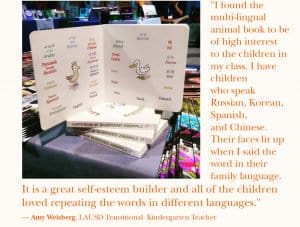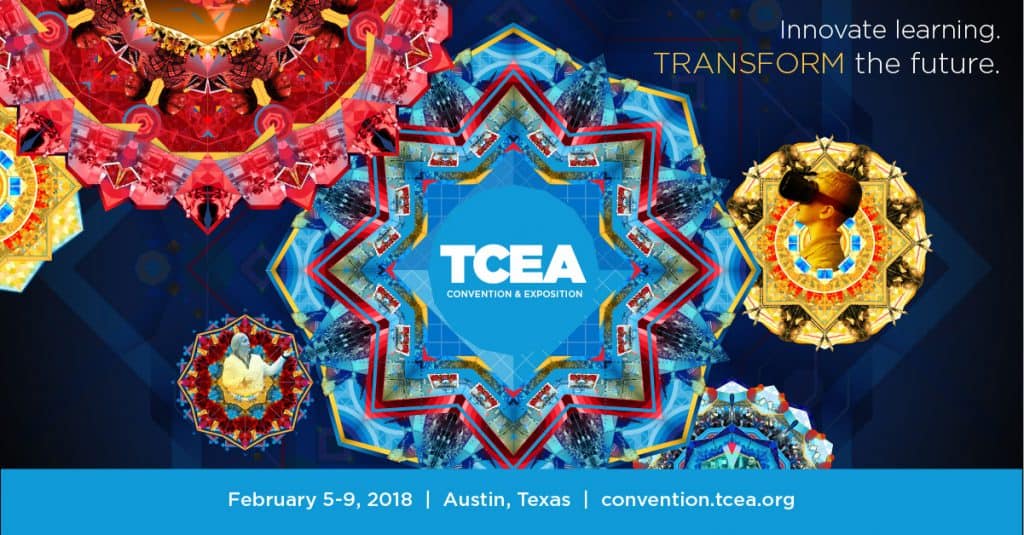
 Mary Thrond explores trends in world language development for teachers (Teaching Works, University of Michigan, www.teachingworks.org)
Mary Thrond explores trends in world language development for teachers (Teaching Works, University of Michigan, www.teachingworks.org)
Commissioned by a bipartisan group of members of Congress “to examine the nation’s current capacity in languages and recommend actions to ensure excellence in all languages as well as international education and research” (vii), the American Academy of Arts and Sciences Commission on Language Learning released the report America’s Languages: Investing in Language Education for the 21st Century in 2017, which found that “the ability to understand, speak, read, and write in world languages, in addition to English, is critical to success in business, research, and international relations in the 21st century” (viii).
The overarching recommendation was to establish “a national strategy to improve access to as many languages as possible for people of every region, ethnicity, and socioeconomic background—to value language education as a persistent national need” (viii). However, they cited a lack of teachers as a major obstacle to the accomplishment of this recommendation, with 44 states reporting a shortage of qualified language teachers.
Not surprisingly, one of the report’s key suggestions was to “increase the number of language teachers at all levels of education so that every child in every state has the opportunity to learn a language in addition to English” (ix). This article will look at how to best prepare these badly needed teachers with education programs and how to support existing teachers, whether they be novice, emerging, or advanced, in order to keep them in the profession.
After some research and some help from experts in the field, here is a look at existing tools and resources, current trends, and insights into the future of professional development for world language teachers.
The well-established tools of the trade, the textbooks for most teacher-education programs, are Languages and Learners: Making the Match: World Language Instruction in K–8 Classrooms and Beyond, by Helena Curtain and Carol Ann Dahlberg, and Teacher’s Handbook: Contextualized Language Instruction, by Judith Shrum and Eileen Glisan, both in their fifth editions. These textbooks provide insight into second-language acquisition (SLA) research as well as effective pedagogical strategies. Created with a pragmatic approach, they go beyond theory and serve not only as primers for beginning teachers but as guides for ongoing professional development for experienced teachers as well.
Effectiveness
Similarly, the Teacher Effectiveness for Language Learning Project (tellproject.com) provides a framework, tools, resources, and a community network for language teachers. The framework identifies teacher characteristics and behaviors that represent the model world language teacher. It is meant to guide teacher growth toward that model. Seven domains are divided into three stages of preparing, planning, and supporting student learning: preparing for student learning; environment and planning; advancing student learning; the learning experience; performance and feedback; learning tools; and supporting student learning: collaboration and professionalism. Each domain is broken down into characteristics presented as can-do statements.
The STELLA modules created by the federally funded STARTALK program are an excellent companion to the TELL Project, as they provide tasks and resources to develop those characteristics of the model teacher.
These modules allow teachers to self-assess and set their own goals toward growth. This shift from teaching to learning in order to meet the needs of the learner is supported by the backward design model (Wiggins and McTighe, 2005). The can-do statements developed by the National Council of State Supervisors for Languages (NCSSFL) and the American Council on the Teaching of Foreign Languages (ACTFL) allow language learners to identify and set learning goals in language and intercultural proficiency. Educators use them to create communication learning goals around the interpretive, interpersonal, and presentational modes for curriculum, unit, and lesson plans. The can-do statements are just one of a plethora of staff development resources available through ACTFL.
Paul Sandrock, ACTFL director of education, addresses the role of assessment in professional development: “Today’s language educators need to help learners, their parents, and administrators understand what counts in charting progress toward higher levels of proficiency in using language. Different forms of assessment are needed to match the information one is trying to discover. Educators need to identify the purpose behind the assessment in order to design the assessment that provides the best match.”
“Learning checks are those quick responses that indicate if the learners ‘got it.’ The key question is: did the learners pick up the vocabulary, structures, or language functions taught? The response may be physical (thumb up/thumb down), a selection (hold up fingers to indicate number one, two, three, or four as the right choice), or another indication where the educator can scan the room and decide if the content needs reteaching or not.
“Formative assessments provide evidence that learners can apply or manipulate what they have learned. This is where learners apply the vocabulary, structures, or language functions they have learned in a manner that helps the educator decide if learners can use what was taught in a way that is less and less scaffolded or supported by the educator. The educator reflects on the results to decide what adjustments to instruction or what future practice may be necessary.
“Summative assessments demonstrate what learners have acquired. Summative assessments answer the important question: what can learners do with what they have learned (and perform independently of the educator)? In the summative assessment, learners show their progress toward the desired proficiency target.
“In the classroom, educators support learning so that learners can demonstrate higher levels of proficiency than that which they can reach independently. This is performance where learners practice and become increasingly familiar with the content within the thematic focus of each unit.
This practice raises the level of language performance. When the next unit begins with a new focus to explore, the learners’ performance drops, until the practice and familiarization again raise performance back up to a slightly higher level. Proficiency is ‘independent use of language.’ The flow of assessment in the classroom world of performance (from learning checks to formative assessments to summative assessments) provides indicators of learners’ level of proficiency.”
Donna Clementi, classroom teacher for over 30 years, now leading workshops for world language teachers, and co-author of The Keys to Planning for Learning: Effective Curriculum, Unit, and Lesson Design, remarks that “Teaching world languages in the 21st century has expanded our knowledge base of teaching and learning. Research around the world about second-language acquisition and how the brain learns is influencing how we think about structuring instruction, assessment, and curriculum.
“There are 16 National Language Resource Centers under the Department of Education’s Title VI across the U.S. conducting research and designing resources to improve world language education. Various organizations and universities are offering specialized conferences on topics such as immersion and dual-language immersion, intercultural communicative competence, technology-assisted language learning, and heritage language learners to allow participants to explore a topic in depth.
“In the past year, ACTFL has published Enacting the Work of Language Instruction: High-Leverage Teaching Practices by Eileen W. Glisan and Richard Donato, highlighting high-leverage teaching practices in the world language classroom, and While We’re on the Topic: BVP on Language, Acquisition, and Classroom Practice by Bill VanPatten on principles underlying contemporary communicative language teaching. These examples underline the critical need for ongoing, high-quality professional development so that educators can make informed decisions about the most effective ways to teach world languages.”
Clementi shares recommendations: “Through my work with a variety of schools and districts, I find that the most successful professional development initiatives are the ones that are designed with input from the world language teachers and a clear plan to sustain exploration of the identified professional development topic over an extended period of time.
Successful plans articulate why the topic was selected and the intended outcomes. Teachers need regular opportunities to meet together to share efforts to implement what they are learning through professional development and how well what they tried worked. The overall plan includes time for the entire school or department to hear a common message about the topic, integrated with a variety of options that teachers can pursue individually and in small groups to further their understanding of the topic.
Groups might complete a book study to gain important background information or read and discuss articles from Foreign Language Annals and/or The Language Educator related to the identified topic. Technology can facilitate these discussions to allow teachers to share ideas from the articles and ask questions synchronously and asynchronously.
“The internet includes a rich library of resources including webinars, classroom videos, online discussions, and virtual conferences, giving teachers the opportunity to pursue aspects of the identified professional development topic of personal interest to them. The use of digital badges to document an individual’s professional development experiences and learning is spreading as more people understand the potential to meet teachers’ individual needs for learning. This potential to build in choice as part of a school’s or district’s professional development increases teachers’ interest and engagement and builds community among the teachers, as everyone is bringing important knowledge and understandings to the in-person meetings to share.”
Teaching with Tech
America’s Languages: Investing in Language Education for the 21st Century suggested that digital technologies could help address the shortage of teachers, yet, “technology should not be seen as a replacement. Any successful program in language education requires at least some direct communication with a qualified instructor to teach complicated concepts like context, speaker intent, and shades of meaning” (2017). Twenty-first-century learners are particularly responsive to and motivated by the use of technology.
Language apps for computers and smartphones allow students to access language in their own time. Advances are being made in voice recognition, artificial intelligence, and human–systems interface design. In the future, “language education will continue to be influenced by [these] advances in technology” (2017).
Marlene Johnshoy, web manager and online education program director of one of the National Language Resource Centers, the Center for Advanced Research on Language Acquisition (CARLA) at the University of Minnesota, has created an online STARTALK course for teachers who want to learn to teach online. She and her colleagues collaborate to allow the teachers to first experience learning online as they learn to teach language online, which shows them what their students will experience when they offer their own courses entirely online. CARLA offers 15 different summer institutes for the professional development of language teachers, plus the STARTALK program.
Three of those have a technology focus, three of them are offered exclusively online, one has a remote synchronous option to a face-to-face course, and many of them have online components or resources. Johnshoy adds, “ACTFL offers online courses through virtual learning modules and online courses. The ACTFL Special Interest Group (SIG) for Distance Learning is starting a mentor program for new online teachers and has also created online lessons for the mentor/mentee pairs to work through, which include three series of materials the NFLRC has developed on the following topics: designing interaction for online language learning, online materials development, and assessing online language learning.
“All of the lessons and resources are free and openly available to all language educators. In addition, more and more teacher preparation programs are including information about teaching online with the increasing need for teachers to know how to teach online. Many institutions are now offering completely or mostly online programs and certificates with maybe a summer course or two that are face to face; for example, Kean University is now offering a mostly online master’s in Hindi and Urdu pedagogy.”
Carol Gaab, founder of Fluency Matters, which publishes comprehension-based novels, has been providing teacher training in comprehensible input (CI)–based strategies since 1996. She summarizes her experience and her vision for the future with the following comments: “There is no doubt there has been a major shift in the focus of professional development as it relates to language instruction. In the ‘90s, I took Dr. Stephen Krashen’s message of comprehensible input and Blaine Ray’s notion of total physical response storytelling [now known as teaching proficiency through reading and storytelling] on the road, and more often than not, I encountered resistance. In 2018, however, the doors to acquisition-driven, CI-centered instruction have been blown open by thousands of educators and researchers who have spent the last 20 years searching for answers to the mysteries of acquisition and how to align the principles of second-language acquisition to their classroom practices. Today, progressive language educators use scads of CI-based approaches to facilitate acquisition.
“The internet has played a huge role in the shift to acquisition-centered instruction. Dr. Bill VanPatten hosts a weekly live internet talk show to discuss the underpinnings of second-language acquisition, and numerous other acquisition-minded educators publish blogs, webinars, and podcasts dedicated to SLA and CI-focused approaches. I suspect that the professional development of old will be eradicated by 2025—’old’ meaning the focus on ‘practice’ (vs. authentic communication), on contrived approaches that result in consciously learned (memorized) language and NOT in proficiency, and on using L2 in order to fulfill some underlying grammar-based agenda.”
Cultural Context
There is an increasing awareness of acknowledging the background, experience, and culture of the learner, as well as of building an awareness of one’s own frame of reference as a teacher (Glynn, Wesely, and Wassel, 2014). Christine Sleeter (2017) recommends that teacher preparation programs require teacher candidates to complete at least one ethnic studies course. She suggests that teachers need to gain culturally responsive and ethnic studies content in order to work with it effectively.
She also believes that prospective teachers need guidance to get to know the cultural context their students come from, as well as to be familiar with their communities. This can help them to engage their students. When students can identify with their own life experiences and interests, they excel academically. She recognizes that prospective teachers also need to develop a sense of themselves as cultural and racialized beings, so that they can develop a comfort level in bringing up discussions of racialized issues in the classroom.
Carol Ann Dahlberg, co-author of Languages and Learners: Making the Match: World Language Instruction in K–8 Classrooms and Beyond, expresses her concern to keep language learning relevant and joyful. “Teachers of world languages today have more guidelines and resources at their disposal than ever before, a constantly evolving set of principles and checklists. Conscientious teachers seek to use this information for the benefit of their curriculum and their students. With so many ‘boxes’ to check, however, we can miss the very elements that make all learning effective and meaningful.
“As we prepare teachers to create curriculum and lessons guided by structure and accountability, we should also empower them to build in important elements that bring joy to teaching and learning. We need to incorporate qualities of imagination, wonder, surprise, discovery, curiosity, creativity, and play to bring life and purpose to language learning. As we seek to give greater emphasis to these less measurable elements, it can be helpful to keep these questions, based loosely on the work of Kieran Egan, in mind as teachers plan:
What is most important about this topic/unit/lesson?
What is affectively engaging about it?
Why should it matter to these learners?
They can serve as a starting point to remind us of the qualities that can make language learning relevant and joyful.”
In sum, professional development for world language teachers is trending to focus on the learner. Key elements are the development of an understanding of second-language acquisition, a cultural awareness of students’ backgrounds as well as one’s own, and goal-setting.
Assessment needs to be meaningful to students and to lead to higher proficiency. Teachers need to stay abreast of advances in technology and to continue to make learning relevant and joyful. Staying connected through professional organizations, conferences, periodicals, online groups, and newsletters has never been more important.
References
Commission on Language Learning. America’s Languages: Investing in Language Education for the 21st Century. Cambridge, MA: American Academy of Arts and Sciences, 2017.
Glynn, C., P. Wesely, and B. Wassel. Words and Actions: Teaching Languages through the Lens of Social Justice. Alexandria, VA: ACTFL, 2014.
Sleeter, C. “Designing Lessons and Lesson Sequences with a Focus on Ethnic Studies or Culturally Responsive Curriculum.” Working paper, TeachingWorks, University of Michigan, November 2017. http://www.teachingworks.org/images/files/TeachingWorks_Sleeter.pdf
Wiggins G. and J. McTighe. Understanding by Design, second edition. Alexandria, VA: ASCD, 2005.
Mary Thrond supervises teachers in concurrent enrollment courses in Spanish for Southwest Minnesota State University and directs a STARTALK Chinese program for teachers and students in the summer.

 February 2018 is Lead with Languages Advocacy Month. Throughout this month, we will be celebrating the successes of language advocates from around the country, and we encourage you to share how you are encouraging language learning using #LangMag and #LeadWithLanguages
February 2018 is Lead with Languages Advocacy Month. Throughout this month, we will be celebrating the successes of language advocates from around the country, and we encourage you to share how you are encouraging language learning using #LangMag and #LeadWithLanguages


 Mary Thrond explores trends in world language development for teachers (Teaching Works, University of Michigan, www.teachingworks.org)
Mary Thrond explores trends in world language development for teachers (Teaching Works, University of Michigan, www.teachingworks.org) The Reaching English Learners Act has been introduced in Congress in hopes of creating a solution to the national shortage of ELL teachers. The act would create a grant program under Title II of the Higher Education Act. The grants will be awarded on a competitive basis to eligible teachers. The grants aim to ensure that teachers possess the knowledge necessary to effectively instruct English learners.
The Reaching English Learners Act has been introduced in Congress in hopes of creating a solution to the national shortage of ELL teachers. The act would create a grant program under Title II of the Higher Education Act. The grants will be awarded on a competitive basis to eligible teachers. The grants aim to ensure that teachers possess the knowledge necessary to effectively instruct English learners. Mother-tongue literacy, access, and equity under-recognized
Mother-tongue literacy, access, and equity under-recognized The Texas Computer Education Association (TCEA) Convention and Exposition is in its second day in Austin, with activities running until February 9. TCEA (Texas Computer Education Association) is a global, nonprofit, member-based organization supporting the use of technology in education. Founded in 1980, TCEA has been playing a vital role in increasing technology funding and access for PreK-16 schools for 37 years.
The Texas Computer Education Association (TCEA) Convention and Exposition is in its second day in Austin, with activities running until February 9. TCEA (Texas Computer Education Association) is a global, nonprofit, member-based organization supporting the use of technology in education. Founded in 1980, TCEA has been playing a vital role in increasing technology funding and access for PreK-16 schools for 37 years. Friday February 8 is the last chance to apply for the study abroad Boren Scholarships. These scholarships promote long term linguistic and cultural immersion, and therefore study abroad proposals for two or more semesters are strongly encouraged. Preference will be given to undergraduate applicants proposing a at least 6 months overseas.
Friday February 8 is the last chance to apply for the study abroad Boren Scholarships. These scholarships promote long term linguistic and cultural immersion, and therefore study abroad proposals for two or more semesters are strongly encouraged. Preference will be given to undergraduate applicants proposing a at least 6 months overseas.
 Languages Canada, the country’s national language-education association, has launched a dynamic new web tool for students, parents, agents, foreign governments, and Canadian trade commissioners, which allows users to conduct a personalized search for the accredited language programs that best meet their needs by filtering their criteria.
Languages Canada, the country’s national language-education association, has launched a dynamic new web tool for students, parents, agents, foreign governments, and Canadian trade commissioners, which allows users to conduct a personalized search for the accredited language programs that best meet their needs by filtering their criteria.
 Al Jazeera has launched a Mandarin-language news
Al Jazeera has launched a Mandarin-language news  It has been widely thought that humans learn language using brain components that are specifically dedicated to this purpose. However, new evidence strongly suggests that language is in fact learned in brain systems that are also used for many other purposes, which pre-existed humans and even exist in many animals, say researchers in PNAS (Early Edition online Jan. 29 http://www.pnas.org/content/early/2018/01/25/1713975115).
It has been widely thought that humans learn language using brain components that are specifically dedicated to this purpose. However, new evidence strongly suggests that language is in fact learned in brain systems that are also used for many other purposes, which pre-existed humans and even exist in many animals, say researchers in PNAS (Early Edition online Jan. 29 http://www.pnas.org/content/early/2018/01/25/1713975115).